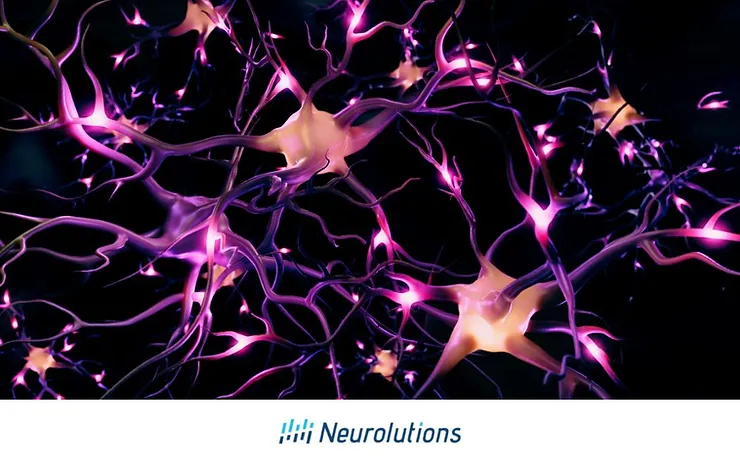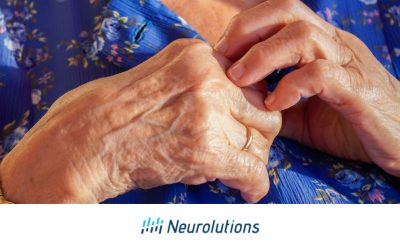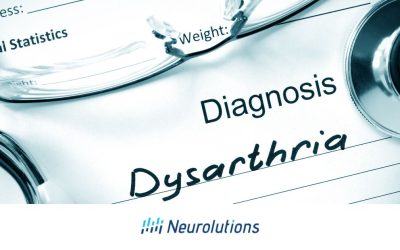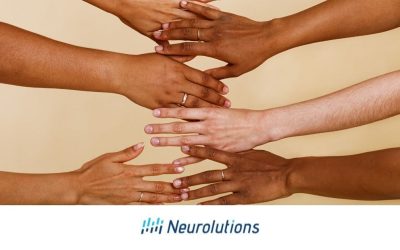While the full name is quite a mouthful to pronounce, Brain-Derived Neurotrophic Factor is a key molecule that all survivors of a stroke should be striving to access in their brain. Shortened as BDNF, the protein has been referenced as “Miracle Grow” for the brain.
Why should BDNF become part of your everyday vocabulary if you are a stroke survivor?
Why should you be seeking opportunities to pump your brain full of BDNF?
What can you do to raise your BDNF levels?
This article will answer these questions and more about why BDNF needs to be on your radar for the rest of your life whether you have had a stroke or simply want to optimize your brain power.
What Is Brain-Derived Neurotrophic Factor or BDNF?
Here is your simple science lesson.
BDNF is a key protein that “primes the pump” for enhanced brain performance.
Physiological functions of BDNF are believed to be but are not limited to (1). :
- Protection and nourishment of vital information messengers in the brain and nervous system known as neurons
- Strengthens and regulates interconnections between neurons
- Help detect and prevent neurological inflammatory disorders
- Creation of new neurons, known as neurogenesis
Clinically, BDNF plays an important role in cognitive function, learning and memory, mood, and brain plasticity (i.e. the ability for the nervous system to change).
BDNF is produced naturally at birth when the infantile brain is in a massive state of growth and development. Understandably, BDNF levels decline with age.
Alzheimer’s disease, dementia, depression, eating disorders, and neurodegenerative diseases, are now among the many conditions associated with low BDNF.
To no surprise, low BDNF levels are correlated with a higher risk of developing stroke and poor prognostic functional outcomes in stroke survivors. (2)
BDNF, Stroke, and Neuroplasticity
BDNF and stroke cannot be discussed without introducing another word familiar and commonplace in stroke rehabilitation: neuroplasticity.
What is neuroplasticity?
Neuroplasticity is referred to as the brain and nervous system’s ability to self-organize, change, and adapt to both internal and external conditions. Brains are no longer thought to be “hard-wired” or fixed, but rather “soft-wired” and plastic.
A pioneer and thought leader in neuroscience, Dr. Michael Merzenich, PhD, has highlighted the following list of changes demonstrated by brain plasticity research to date:
We can (re-) strengthen the interconnections between neurons.
We can improve the health and vigor of key nerve cell populations- including groups of nerve cells whose neurotransmitters enable learning and can vivify memory.
We can re-strengthen specific skills that support our independent lives. *
*for more lists of changes, read Dr. Merzeich’s book, Soft-Wired, or visit his website at Soft-Wired
Stroke survivors can and do make progress when principles of neurorehabilitation after stroke based on motor learning and brain plasticity mechanisms are utilized (e.g. challenge, mass repetition, intensity).
How Long After Stroke Can You Get Recovery From BDNF?
As said earlier, there is a massive and steady rush of BDNF at birth through infancy. Although there is always an opportunity for BDNF production in childhood and into adulthood, there are two windows in which scientists believe that BDNF is known to rapidly increase after stroke or brain injury:
Subacute phase (7 days – 3 months)
Surrounding the zone where the stroke occurred is an area in the brain referred to as the penumbra. The penumbra may not be fully “online” yet as a natural defense mechanism to avoid additional damage. When ready, the penumbra will rush back online once again thanks to the surging of BDNF. During the subacute phase, it is common to have sudden- and sometimes large- breakthroughs in which function improves seemingly overnight. One of the reasons in this “spontaneous recovery” is made possible is due to the role of BDNF and brain plasticity.
Chronic phase (3-6 months+)
Stroke survivors can still make improvements throughout the chronic phase of recovery. Pete Levine, author of Stroker after Stroke, indicates that “chronic stroke survivors have the same access to neuroplasticity (repetitive practice) and BDNF as everyone else….but it takes work.” The penumbra has been “lying fallow since the stroke,” says Levine. There are a number of methods to trigger opportunities for BDNF production to enhance opportunities for reorganization of the brain’s networks for gains in function.
How to Increase BDNF
Stroke survivor or not, consider engaging in these healthy, modifiable behaviors to increase BDNF in your brain:
Exercise for BDNF
Exercise falls at the top of the list as the best way to enhance BDNF production in the brain. Researchers have discovered that exercise causes a gene to express a surge of BDNF.
While a single session of exercise measurably elevates BDNF, it is highly important to get regular sessions of aerobic exercise consisting of short bursts of high-intensity interval training (i.e. H.I.T.T.).
If you have had a stroke, talk to your physician or therapist about what is going to be a safe and effective way for you to progressively increase tolerance to aerobic exercise.
Walking, speed walking, cycling on a stationary bike, or a row machine may be recommended. Resistance training using weights, dancing, swimming, and yoga have also been known to contribute to the rise of BDNF in the brain.
Hence, start to think about exercise as being a benefit to your brain just as much as it is for your body. (3-7)
Practice good sleep hygiene
Sleep is commonly disturbed after the brain has suffered damage, and it consequently contributes to the depletion of BDNF. Insomnia is also regarded as negatively impacting neuropsychological performance. Therefore, it makes sense that getting enough quality sleep benefits mental and physical recovery and in turn optimizes BDNF production. (8)
Examples of good sleep hygiene practices include:
- Be consistent with a regular bedtime and wake-up time
- Limit caffeine intake before bed
- Eliminate sources of blue light and screen time 30 minutes prior to bedtime
- Avoid exercise in the hours prior to bedtime
- Get natural sunlight throughout the day
- Engage in relaxing activities and build them into your nightly routine
- Create an ambiance in your bedroom that you perceive as calming and soothing
- Keep your room at a cool temperature
- Keep a sleep diary to help establish routines
- The bed is meant to be used for two things: sleep and intimacy
Eat BDNF-boosting foods
Unprocessed quality foods are essential staples for the elevation of BDNF. In fact, the Mediterranean diet (a low-fat diet known to counteract inflammation) offers foods that raise BDNF levels. (9)
A list of food sources regarded as boosters of BDNF include coffee, olive oil, soy, grapes, green tea, turmeric, fish with Omega-3, leafy green vegetables, and eggs. (10)
Manage your stress
Depression and anxiety is a common experiences for stroke survivors. It can be caused by biochemical changes in the brain, often due to the massive toll, it takes on one’s mental, emotional, physical, and social well-being. Stroke survivors often struggle to get adequate exercise, sleep, social interactions, and sometimes nutrition. This is known to have a correlation with feelings of sadness, despair, and worry.
Stress management practices, including mindful-based interventions like meditation, deep breathing, yoga, and tai chi, are known to be beneficial for the management of stress.
Connect with others
Research is strongly supporting the importance of social relationships for longevity, and memory, and for preventing the decline of overall physical and emotional health and wellness. BDNF levels are known to be lower in those that are socially isolated and higher in those who connect regularly with others.
According to a large community sample from the Framingham Heart study, there is also a correlation between low social support and stroke and dementia. Findings from this study as well as others suggest interventions that encourage social engagement may be neuroprotective for stroke, and multiple forms of dementia, and quite possibly promote brain plasticity after stroke due to projected elevation of BDNF. (11, 12)
Seek out sources of natural sunlight
Although prolonged, unprotected sun exposure can cause damage to our body, sunlight has been shown to elevate BDNF. Not everyone lives in regions where there is sun throughout the year, but when able and where appropriate, consider spending a little time outdoors with some SPF catching some sunlight. (13)
It should be noted that there are many other methods to increase BDNF that are easily accessed on the internet. Always talk with your physician before introducing strategies that have an impact on your health and wellness throughout your stroke recovery.
Got BDNF?
Those who have had an injury or are afflicted with a condition of the brain need BDNF more than ever.
To fight the good fight after stroke, do not fail to apply BDNF production tactics to give you the upper hand.
Is BDNF only applicable to those with stroke or other conditions of the brain?
Not at all! In fact, if you want to delay your aging brain and live a healthier and longer life, find ways to increase BDNF. STAT.
Your brain health depends on it!
References
- Colucci-D’Amato L, Speranza L, Volpicelli F. Neurotrophic Factor BDNF, Physiological Functions and Therapeutic Potential in Depression, Neurodegeneration and Brain Cancer. Int J Mol Sci. 2020 Oct 21;21(20):7777. doi: 10.3390/ijms21207777. PMID: 33096634; PMCID: PMC7589016
- Astuti A, Sutarni S, Setyopranoto I. Serum Brain-Derived Neurotrophic Factor (BDNF)Level may Predict the Functional Outcome of Acute Ischemic Stroke Patients. Biomed Pharmacol J 2020;13(4).
- Walsh JJ, Tschakovsky ME. Exercise and circulating BDNF: Mechanisms of release and implications for the design of exercise interventions. Appl Physiol Nutr Metab. 2018 Nov;43(11):1095-1104. doi: 10.1139/apnm-2018-0192. Epub 2018 May 18. PMID: 29775542
- Håkansson K, Ledreux A, Daffner K, Terjestam Y, Bergman P, Carlsson R, Kivipelto M, Winblad B, Granholm AC, Mohammed AK. BDNF Responses in Healthy Older Persons to 35 Minutes of Physical Exercise, Cognitive Training, and Mindfulness: Associations with Working Memory Function. J Alzheimers Dis. 2017;55(2):645-657. doi: 10.3233/JAD-160593. PMID: 27716670; PMCID: PMC6135088.
- Mang CS, Campbell KL, Ross CJ, Boyd LA. Promoting neuroplasticity for motor rehabilitation after stroke: considering the effects of aerobic exercise and genetic variation on brain-derived neurotrophic factor. Phys Ther. 2013 Dec;93(12):1707-16. doi: 10.2522/ptj.20130053. Epub 2013 Aug 1. PMID: 23907078; PMCID: PMC3870490.
- Boyne P, Meyrose C, Westover J, Whitesel D, Hatter K, Reisman DS, Cunningham D, Carl D, Jansen C, Khoury JC, Gerson M, Kissela B, Dunning K. Exercise intensity affects acute neurotrophic and neurophysiological responses poststroke. J Appl Physiol (1985). 2019 Feb 1;126(2):431-443. doi: 10.1152/japplphysiol.00594.2018. Epub 2018 Dec 20. PMID: 30571289; PMCID: PMC6397406.
- Stewart JC, Cramer SC. Genetic Variation and Neuroplasticity: Role in Rehabilitation After Stroke. J Neurol Phys Ther. 2017 Jul;41 Suppl 3(Suppl 3 IV STEP Spec Iss):S17-S23. doi: 10.1097/NPT.0000000000000180. PMID: 28628592; PMCID: PMC5477674.
- Teng-Teng Fan, Wen-Hao Chen, Le Shi, Xiao Lin, Serik Tabarak, Si-Jing Chen, Jian-Yu Que, Yan-ping Bao, Xiang-Dong Tang, Jie Shi, Lin Lu, Hong-Qiang Sun, Jia Jia Liu, Objective sleep duration is associated with cognitive deficits in primary insomnia: BDNF may play a role, Sleep, Volume 42, Issue 1, January 2019, zsy192, https://doi.org/10.1093/sleep/zsy192
- Sánchez-Villegas A, Galbete C, Martinez-González MA, Martinez JA, Razquin C, Salas-Salvadó J, Estruch R, Buil-Cosiales P, Martí A. The effect of the Mediterranean diet on plasma brain-derived neurotrophic factor (BDNF) levels: the PREDIMED-NAVARRA randomized trial. Nutr Neurosci. 2011 Sep;14(5):195-201. doi: 10.1179/1476830511Y.0000000011. PMID: 22005283.
- Gravesteijn E, Mensink RP, Plat J. Effects of nutritional interventions on BDNF concentrations in humans: a systematic review. Nutr Neurosci. 2022 Jul;25(7):1425-1436. doi: 10.1080/1028415X.2020.1865758. Epub 2021 Jan 10. PMID: 33427118.
- Mattson MP. Neuroprotective signaling and the aging brain: take away my food and let me run. Brain Res. 2000 Dec 15;886(1-2):47-53. doi: 10.1016/s0006-8993(00)02790-6. PMID: 11119686.
- Salinas J, Beiser A, Himali JJ, et al. Social relationships, serum brain-derived neurotrophic factor, and the risk for stroke and dementia: The Framingham Heart Study. Presented at: The 68th Annual Meeting of the American Academy of Neurology; April 15-21, 2016; Vancouver, British Columbia, Canada. Abstract P1.098.
- Molendijk ML, Haffmans JP, Bus BA, Spinhoven P, Penninx BW, Prickaerts J, Oude Voshaar RC, Elzinga BM. Serum BDNF concentrations show strong seasonal variation and correlations with the amount of ambient sunlight. PLoS One. 2012;7(11):e48046.




